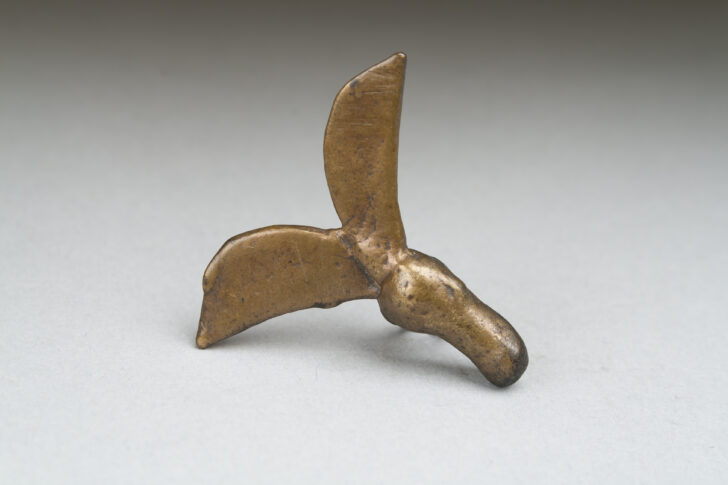Gold-weight
Akan

Description
Subject Matter:
Figurative gold-weight in the form of a double-bladed sword, called afenatene in Twi by Akan-speaking peoples in Ghana (cf. British Museum object number Af1906,0701.62) and called afranta in the pre-colonial Asante kingdom of Kumasi (cf. Niangoran-Bouah, The Akan World of Gold Weights, 1987, Vol. 3, p. 158). Actual swords were part of a king's regalia, and were normally covered in a leather or ray-skin sheath (Sheales, African Goldweights, 2014). The swords or sabers of the various Akan kingdoms served distinct functions, such as the saber that announced the death of a dignitary or one used by the king to take an oath of loyalty to the throne-stool (cf. Niangoran-Bouah, The Akan World of Gold Weights, 1987, Vol. 3, pp. 152-159). Known as the sword of kingship or the long sword, the afenatene used to be displayed near the chief when sitting in state within the palace (Sheales, African Goldweights, 2014; MacLeod, The Asante, 1981, pp. 91-92) or brandished during enthronement rituals or the Yam Festival. A proverb associated with this form of gold-weight states that 'the sword of justice cuts right, cuts left', meaning that in judicial matters, the king doesn't grant anyone special favors. A similar message was also found in the drum that accompanied this sword, which said "I have no favorite, I have no enemy" (cf. Niangoran-Bouah, The Akan World of Gold Weights, 1987, Vol. 3, p. 158).
Physical Description:
Gold-weight in the shape of two curved blades attached to a rounded handle.
Usage Rights:
If you are interested in using an image for a publication, please visit https://umma.umich.edu/request-image/ for more information and to fill out the online Image Rights and Reproductions Request Form.